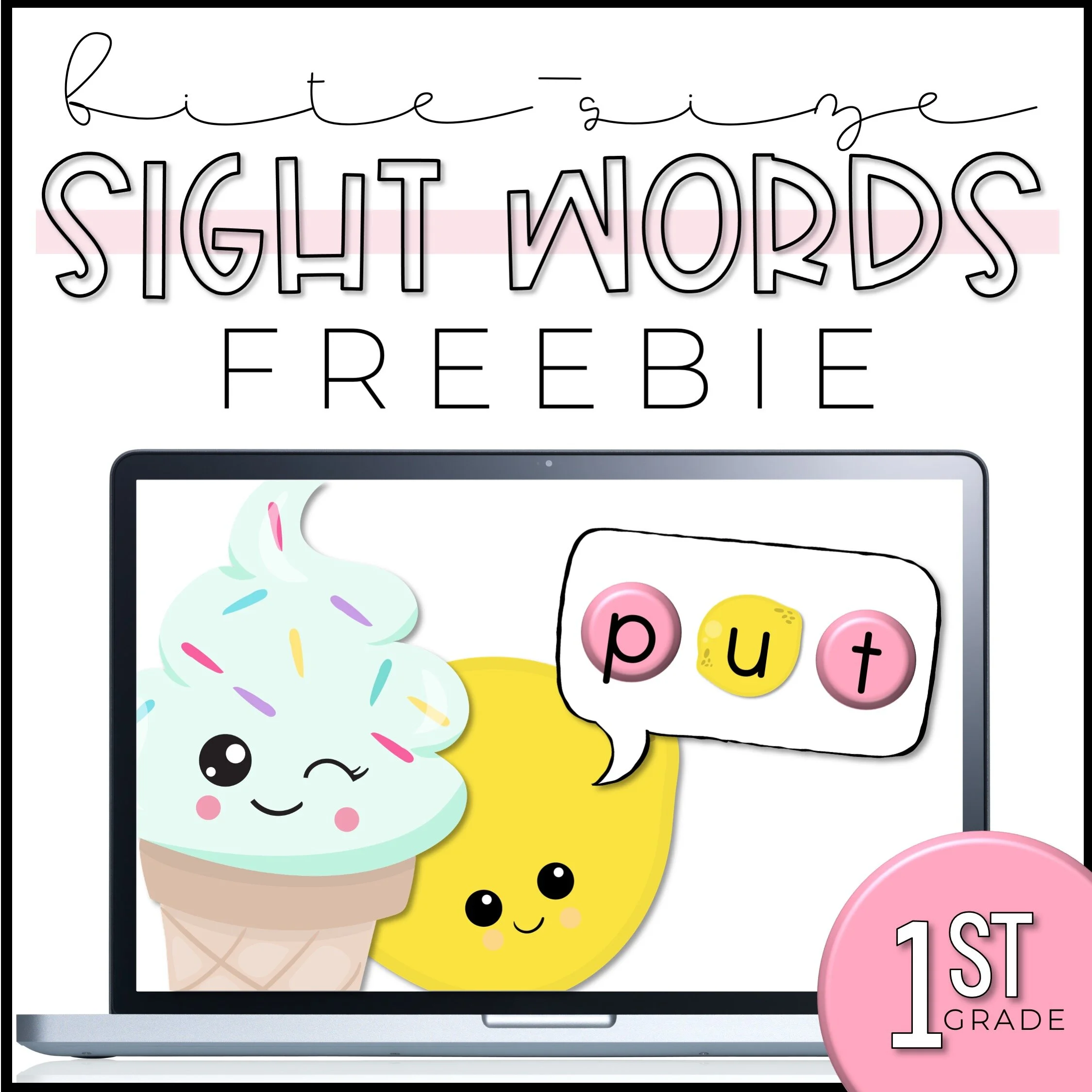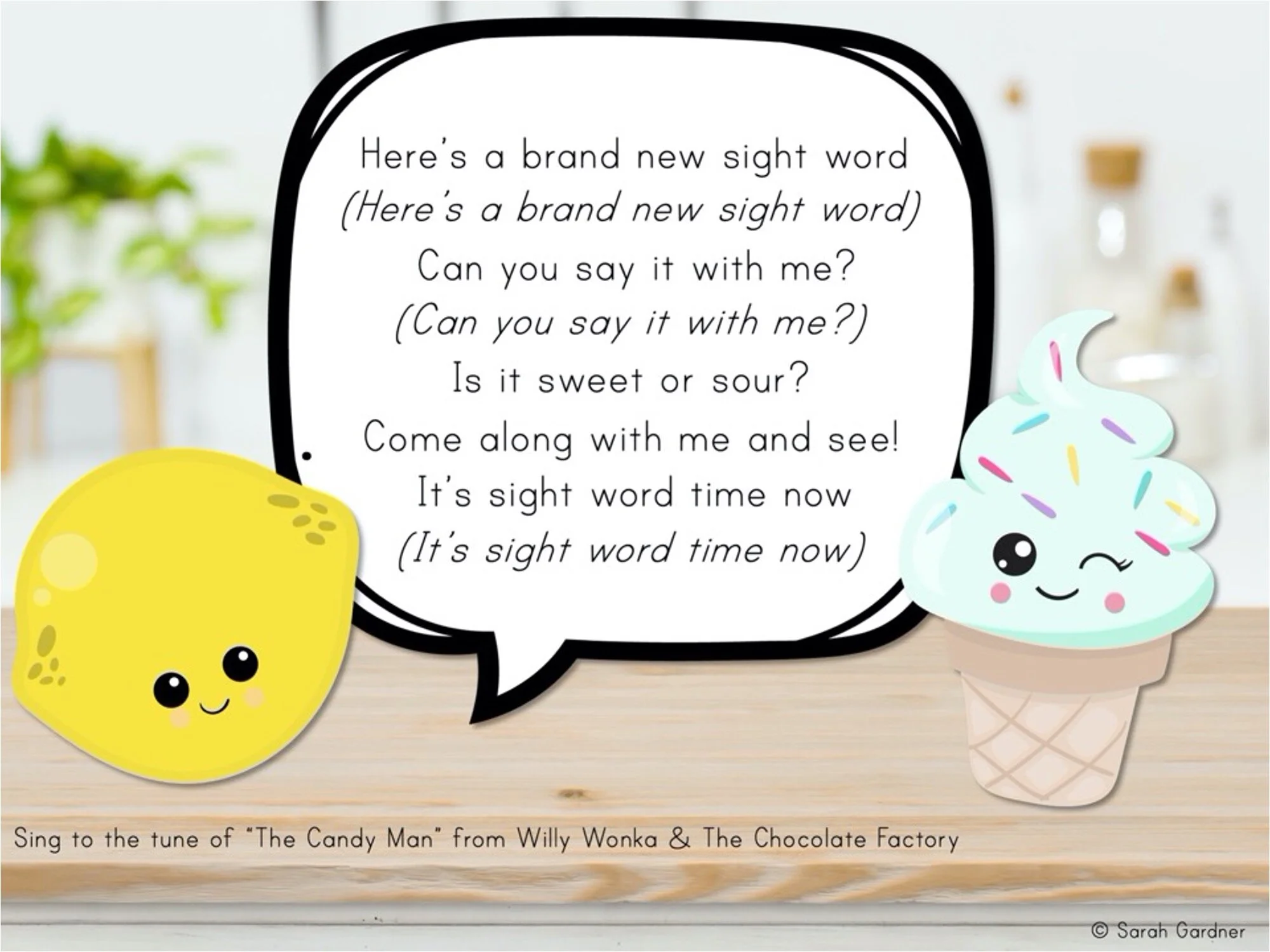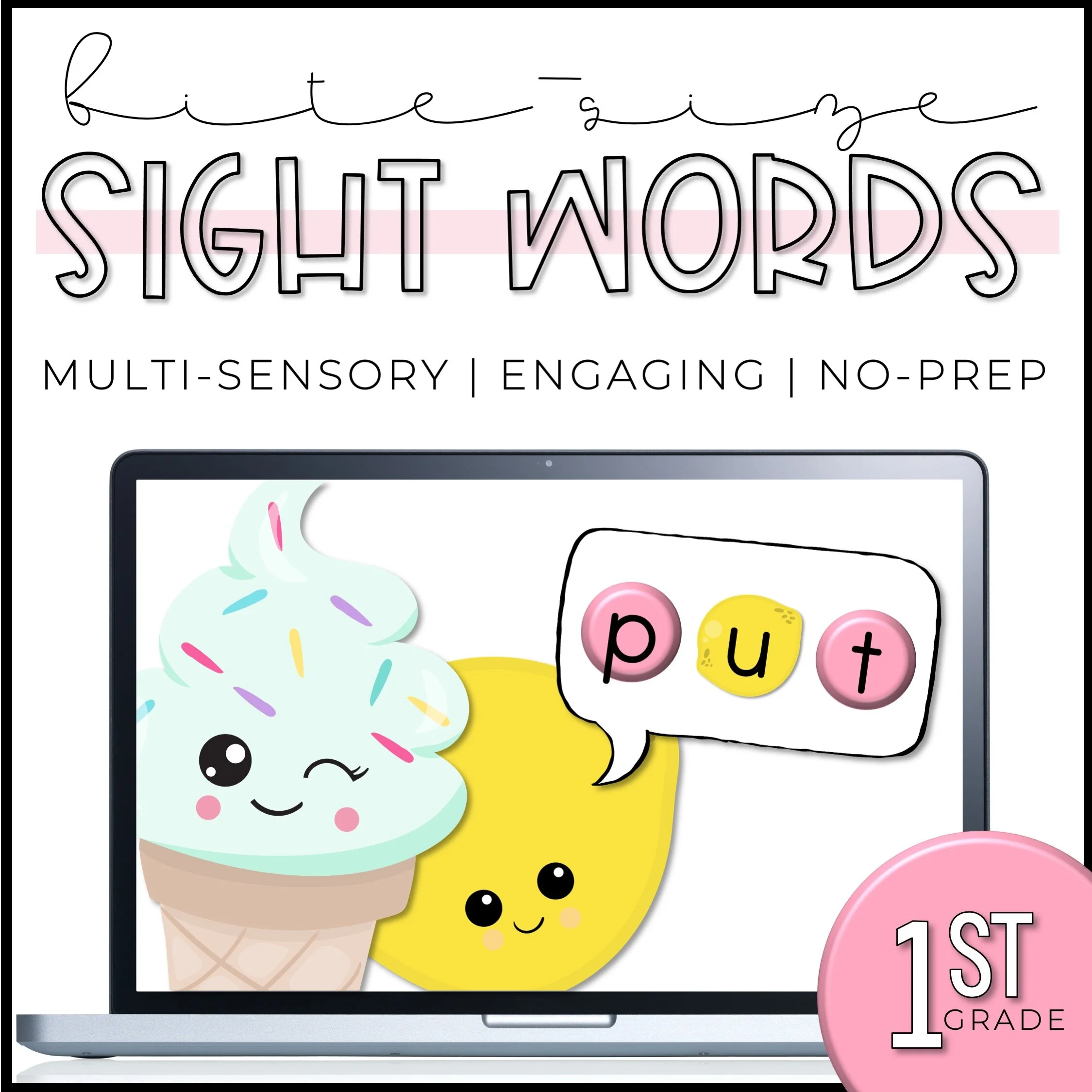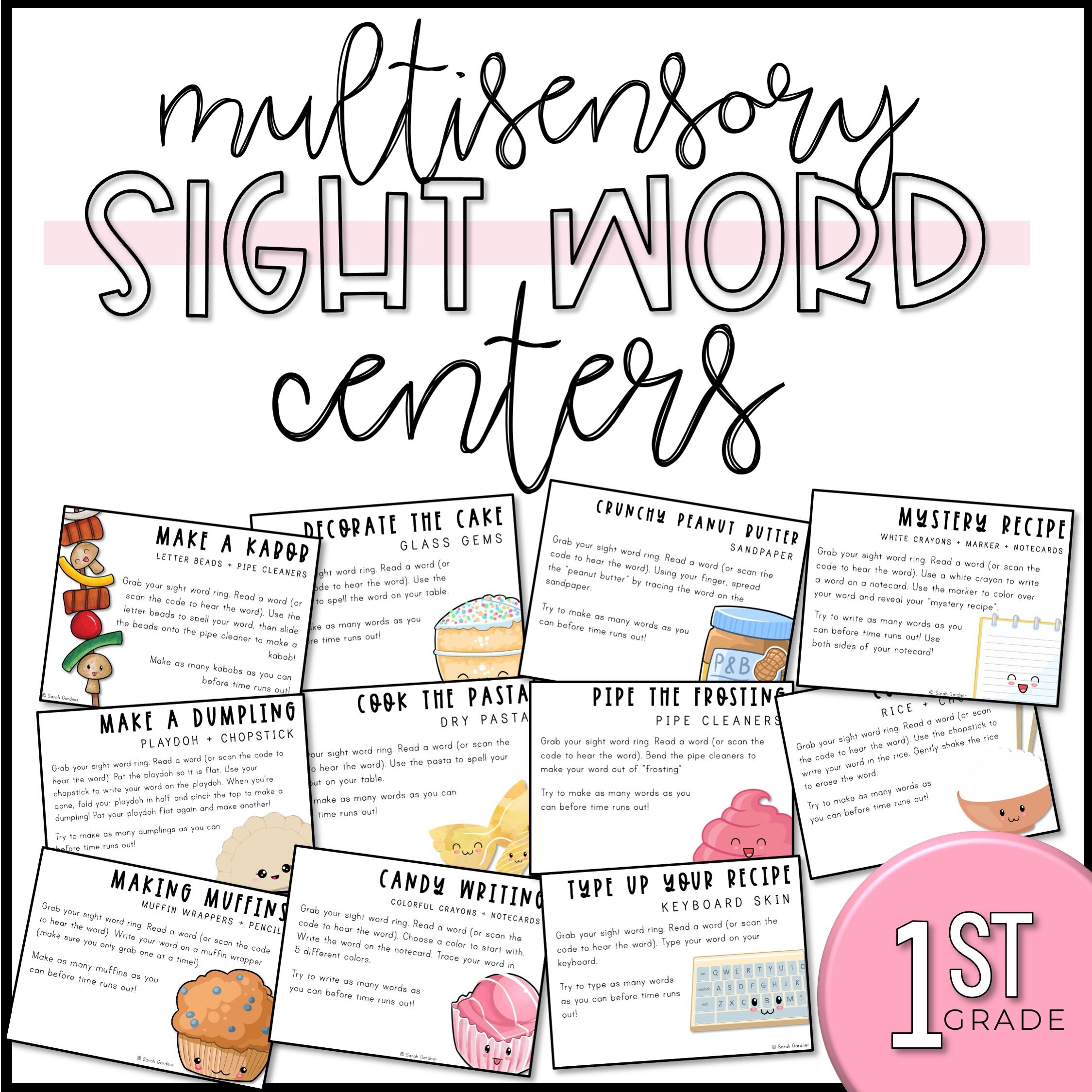Sweet & Sour Sight Words: This 4-Step Routine Will Make Sight Words Unforgettable
How I Used to Teach Sight Words...yikes.
Have you ever had one of those moments when you reflect back on the way you taught something during your first few years in the classroom and thought, “….yikes”?
That's me and sight words. During my first year of teaching first grade, I thought sight words should be one of those things that I could pop up onto my SMART board and kids would just pick them up. They're just supposed to memorize them, right? I'd flip through some slides of words, send home the weekly list, maybe throw a worksheet or two at my kids and call it good.
…yikes.
When I finally figured out that this method just wasn't working for anyone, I took time to dig into the research behind how our brain learns and stores sight words. Sight words don't need to be memorized, they need to be mapped.
Now, I actually teach sight word lessons (as it turns out, putting a sight word slideshow on the board isn't actually teaching…). We map the sounds, reinforce with interactive chants, and practice with multisensory centers. It's life-changing.
I realized that I couldn't keep this method to myself - I wanted every teacher in the entire world to have the success I was having with sight words! So, I began to hone in on what exactly was making them successful, and I’m going to share with you a four-step routine you can use to make sight words unforgettable for your students
Sight Words & The Science of Reading
I’m sure by now you’ve all heard about or attended training about The Science of Reading. It’s a collection of research that digs deep into how the brain learns to read and provides us with a research-based framework for teaching students.
So what does The Science of Reading say about sight words?
Well, first, let’s dive into what a sight word is. A sight word is any word that a student has in their orthographic lexicon, or “sight word memory.” They develop this bank of words by successfully decoding words on several occasions until that word becomes anchored in their orthographic lexicon.
So how do we help students add words to this “sight word memory bank” in their brains?
We help them map the sounds. When students use the phoneme-grapheme (sound-letter) relationship to map unfamiliar words, these words can be added to their orthographic lexicon. This is called orthographic mapping. Let’s take a look at what orthographic mapping could look like with a common sight word below:
So my brain takes this information and automatically jumps to, “okay…now how can I take this and add a little spice?” How can I help students map these words…but also have fun?!
That’s where the Sweet & Sour sight word routine comes in. A sweet word is a word that is completely phonetic and can be mapped easily. A sour word contains one or more sounds that isn’t phonetic or is a “rule” breaker. For example, the word “with” is a sweet word - it’s phonetic! The word “said” is a sour word. Let’s jump into how you can use this method in your classroom. For this example, we’ll walk through a lesson on a sour word, “walk”
What’s a “Sweet” Sight Word?
A sweet word is a word that is completely phonetic and can be mapped easily. Words like: can, with, run, and went are all examples of “sweet” words. These words contain common spelling patterns and can be easily decoded. Our job with sweet words is to help students map the sounds, remind them of spelling patterns they may have forgotten, and give them time to practice the words so they can begin to commit them to their “sight word memory”
What’s a “Sour” Sight Word?
A sour word contains one or more sounds that isn’t phonetic or follows a rule that students haven’t been taught yet. The word “said” is a sour word. The “ai” in the word “said” is the sour sound. Just because the word “said” isn’t completely phonetic doesn’t mean we should through phonics out the window! The “s” and “d” in the word “said” DO follow typical phonics rules, and it’s important that our students know that. Our job with sour words is to call attention to the irregular sounds that we need to map. Let’s jump into how you can use the sweet and sour words method in your classroom. For this example, we’ll walk through a lesson on a sour word, “walk”
If you’d rather explore. a lesson rather than read about it, enter your email below! I’ll send you two free sight word lessons that use the sweet & sour method for you to try out with your students!
How to Introduce a New Sight Word
Step 1 - Is the Word Sweet or Sour?
The first step of the sweet and sour word routine is to reveal to students if the new word is a sweet word or a sour word. I love to build the anticipation with a little sight word song at the beginning of each lesson. My husband and I spent way too much time coming up with this little sight word jingle to the tune of “The Candy Man Can.” I guess true love is writing educational jingles on a Saturday morning?
Step 2 - Listen to the Word & Map the Sounds
First, say the word out loud for students. After they have heard the new word, segment the word into phonemes as a group. How many sounds does this word have?
Step 3 - Reveal the Spelling
One sound at a time, help students map the word by revealing how each phoneme (sound) is represented by a grapheme (letter), focusing on any sour sounds.
Step 4 - Lock It In - Move it to Long-Term Memory
There are many ways to “lock-in” each sight word into students’ orthographic lexicons, but here are a few of my favorites.
watch a video about the sight word
multisensory practice
sight word chants
Sight Word Videos
Videos are magic. Whenever I can incorporate a video into my sight word lessons, I do, because it makes that sight word so much more “sticky” in students’ brains. If you think about it, it makes sense. With a video, we’re combining auditory information with visual information - the more we can hit different sensory systems, the better!
Multisensory Sight Word Practice
During this routine, we practice writing our new word in the air or on our desks with our finger. As we “write” the word, we build a little treat (in this lesson, we’re making a s’more!).
Sight Word Chants
After we watch our sight word videos and do our multisensory practice, we get up and moving with some sight word chants! Now, we’re combining movement + auditory input + visual input! Here are two of my favorite sight word chants.
Ready to Try Sweet & Sour Sight Words in Your Classroom?
Download your free sight word lessons by entering your information below. I think you and your students are going to LOVE these.





























